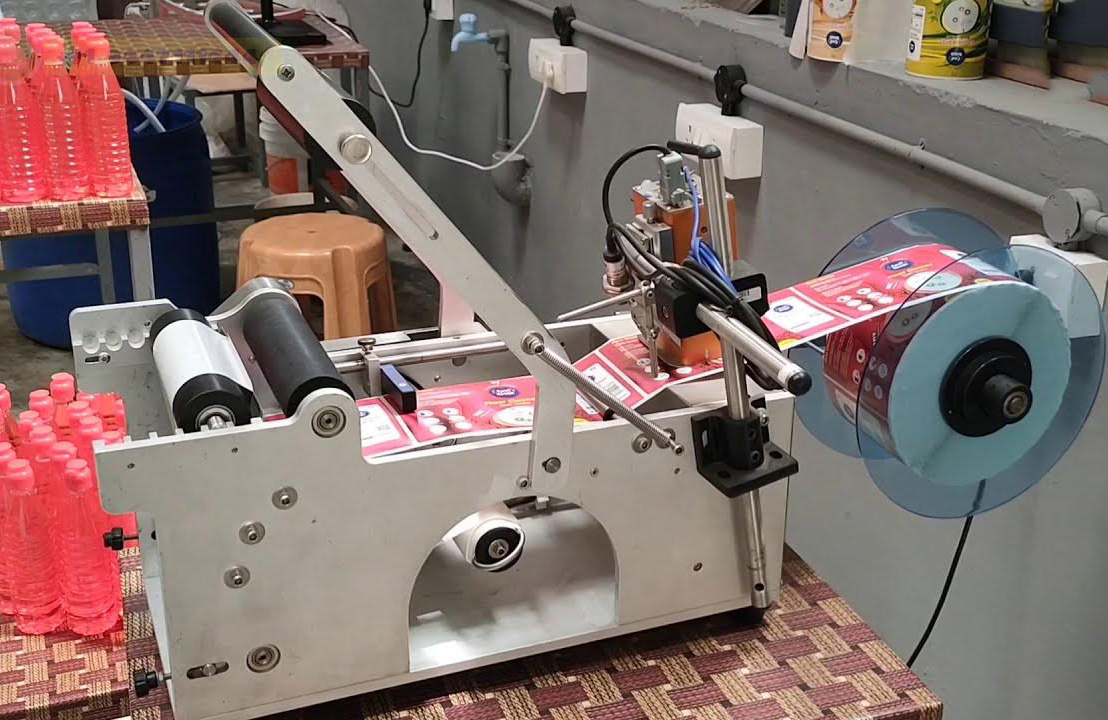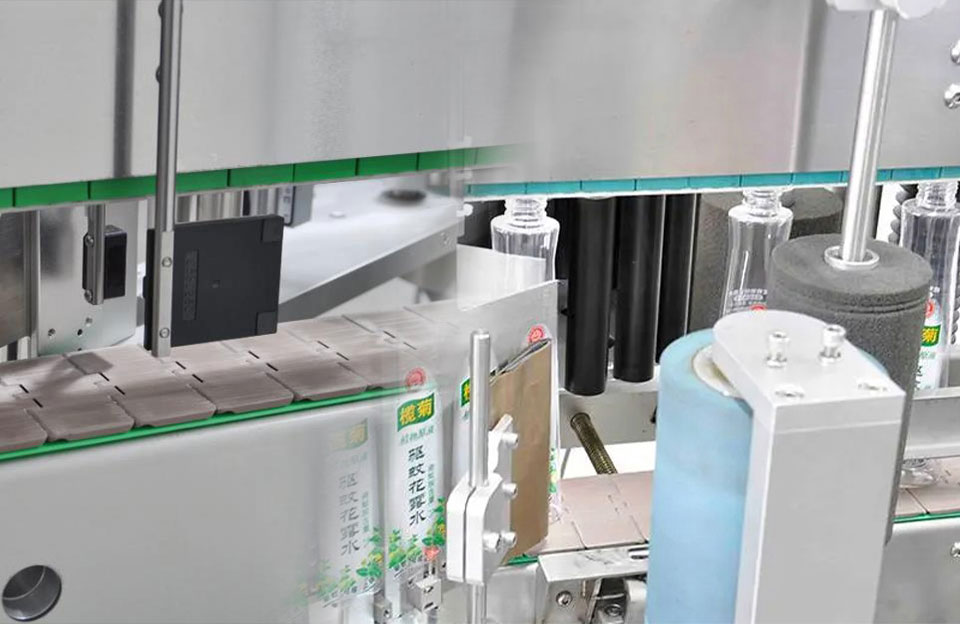In recent years, due to the rapid development of the packaging industry, labeling machines have gradually become indispensable equipment for enterprises. A labeling machine labels packages or products, such as the proportion of product ingredients, production date, production batch number, shelf life, material configuration, etc. The label is the carrier of information on the product packaging.
Labeling machines can be divided into semi-automatic and automatic labeling machine according to the degree of automation. This article mainly makes a comparison between the two kinds of labeling machines.
What Is A Semi-automatic Labeling Machine?
A semi-automatic labeling machine is a versatile and cost-effective solution used in various industries to apply labels to products or packages. It bridges the gap between manual and fully automatic labeling machines, balancing automation and operator involvement. Some tasks are automated in a semi-automatic labeling machine, while others require human intervention.
Semi-automatic labeling machines offer a practical and efficient solution for businesses with a moderate labeling volume and seek a cost-effective labeling solution without investing in fully automatic systems.

What Is An Automatic Labeling Machine?
An automatic labeling machine is a highly advanced and fully automated piece of equipment used in various industries to apply labels to products or packages with minimal human intervention. Unlike semi-automatic labeling machines that require some level of operator involvement, automatic labeling machines perform all labeling tasks autonomously once they are set up and running.
Automatic labeling machines are commonly used in industries like food and beverage, pharmaceuticals, cosmetics, logistics, and manufacturing, where high-speed and precise labeling is essential. While they might involve a higher initial investment than semi-automatic or manual machines, their efficiency, accuracy, and productivity make them a valuable asset for businesses with substantial labeling requirements.

Comparison of Semi-automatic and Automatic Labeling Machine
Semi-automatic and automatic labeling machine differ in various aspects, including the level of automation, throughput, operator involvement, and cost. Here’s a comparison of the two:
- Automation Level:
- Semi-automatic labeling machine: Requires human intervention during the labeling process. The operator typically loads labels and products manually and initiates the labeling process.
- Automatic labeling machine: Operates with minimal human intervention. The machine can automatically handle label loading, product positioning, and label application, often integrated into a production line.
- Throughput:
- Semi-automatic labeling machine: Generally has a lower throughput than automatic machines. The labeling speed depends on the operator’s efficiency in loading products and initiating the labeling process.
- Automatic labeling machine: Offers higher throughput as it can continuously label products without manual intervention, resulting in faster and more efficient label application.
- Operator Involvement:
- Semi-automatic labeling machine: Requires more operator involvement since the operator needs to load products, initiate the labeling process, and possibly adjust settings for different products.
- Automatic labeling machine: Requires minimal operator involvement once the machine is set up correctly. The machine can handle labeling tasks independently, freeing up operators for other tasks.
- Efficiency:
- Semi-automatic labeling machine: Although more efficient than manual labeling, it might still have occasional slowdowns or errors due to manual operations.
- Automatic labeling machine: Highly efficient and consistently applying labels, reducing the chances of labeling errors and increasing overall productivity.
- Cost:
- Semi-automatic labeling machine: Generally more affordable than automatic machines, making it a viable option for businesses with moderate labeling needs and smaller budgets.
- Automatic labeling machine: Tends to be more expensive due to higher automation and capabilities. It is suitable for high-volume production lines where speed and precision are crucial.
- Flexibility:
- Semi-automatic labeling machine: Offers a certain level of flexibility, allowing adjustments for different label sizes and product shapes. However, it might still require some manual adjustments between different products.
- Automatic labeling machine: Highly flexible and adaptable to various label sizes, shapes, and product types. Advanced models can be programmed to handle multiple label formats without manual intervention.
Conclusion
The choice between semi-automatic and automatic labeling machine depends on factors such as production volume, budget, the complexity of labeling tasks, and the level of automation desired. Semi-automatic machines are suitable for smaller businesses or those with moderate labeling needs. In contrast, automatic machines are more suitable for high-volume production lines seeking efficiency and consistency in label application.


